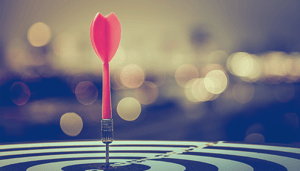During the first 6 months of 2017, 60% of the Dutch organisations' marketing budgets were allocated to Facebook and Google. Marketing budgets have shifted significantly over recent decades: from traditional marketing channels like print, to online- and event marketing. The latter two, although they seem contradictory, happen to combine very well! If you carefully match both channels, they can reinforce each other.
How to strengthen online marketing & events
Most organisations know that online presence is essential - and spend increasing amounts of money on online marketing. However, it takes more than just presence to really stand out! If you make smart use of live events, you can leave a deep, lasting impression on your visitors. A live event can be the kick off - or finish - of a strong online campaign. At the same time, live events don’t succeed without being promoted via blog- and social media posts, and email campaigns.
By promoting interesting topics and speakers, you can make your event relevant for your visitors. The content presented during the event itself, can serve as the basis for interesting online posts and position your organisation as a thought leader in the minds of your audience. This strategy contributes to your customers’ brand awareness, trust and loyalty.
Leave a strong impression
Events can greatly contribute to the creation of brand trust, leading to brand loyalty. Obtaining thought leadership is a commonly used strategy. Provide sufficient content during the event, in terms of interesting speakers and topics. You can repurpose their insights and presentations on your online channels. This way, you claim a strong position in the minds of your customers - and stay top of mind.
A personal impression
Because today's communication is mainly digital, live events now have a greater importance. Online contact is brief and sometimes shallow (a quick post on a timeline, a short 1.5 minute video, etc.). Therefore, time and attention can significantly strengthen your relationship with your customers. Live events create opportunities for personal meetings and interaction between your organisation and your (potential) customers.
Entering into dialogues with your visitors, allows you to discover the needs of your (potential) customers during the event. Distinguish your organisation by moving from ‘sending information’ to learning from and understanding your customer - and eventually building a solid long term foundation.
Customer journey
The customer journey (B2B - buyer’s journey) is becoming increasingly important in the (online) marketing strategy of many companies. When setting up an (online) campaign, it is important to always consider the stage your (potential) customer is in: Awareness, Consideration or Decision.
The same goes for event marketing: each event can be categorised in one of these 3 phases:
- Awareness: Product launch, conference
- Consideration: Roadshow
- Decision: Knowledge session, networking event
Keep in mind that live events do not only affect new customers - you can use them to service existing clients as well. Therefore, always try to make your valuable customers feel welcome at your event: the relationship with your client goes beyond their first purchase. With the right approach, events can be great opportunities to create life-time customers!
How to use online marketing for your events
Although the ultimate customer experience should take place during your events, a good Adwords or Facebook campaign before, during and after the event is crucial.
By carefully targeting the right audience, you can achieve great results. Find out what particular phase of the customer journey your client is in - and always adjust your message accordingly.
In order to reach the right audience – essential to the success of your event - you can, for example, segment on job title, type of organisation, industry or location, and develop different campaigns for various audiences.
Conclusion
Events remain an essential part of the marketing strategy. Online marketing and events seem to contradict each other -but in practice, and if used wisely, they can reinforce each other! When you target smartly and seek interaction with your visitors, the combination of both channels can create synergy - and result in a sustainable relationship with your clients.


